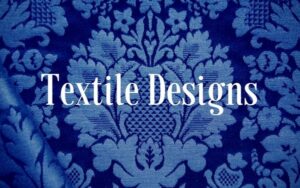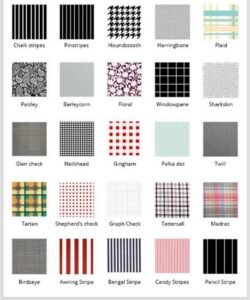Textile Designs SS1 Visual Arts Lesson Note
Download Lesson NoteTopic: Textile Designs

Textile design can be defined as the art and process of designing the structure and looks of fabrics or textiles. It is a branch of applied art.
Textile Design and the products from this branch of art form a supply chain to fashion designers, interior designers, furniture, car interior finishing, life jackets and other beneficiaries of the textile design branch of art. Textiles come in a wide range of colours and patterns and it is the textile designer that determines the type of design the fabric should have depending on its use. To create patterns or designs on fabric, a designer may use several methods.
PATTERN AND MOTIF IN TEXTILE DESIGN

PATTERN
A Pattern is a combination of elements or shapes in a regular recurring or repeated arrangement. The arrangement of patterns which is dominant in textile designs is seen in wallpapers, carpets, clothing and different fabrics.
RHYTHM
Rhythm is like a pattern, in the shared element of shape, line or object. It is achieved through the repetition of an element in an alternate arrangement placement throughout the composition.
MOTIF
A motif is a dominant decorative image, shape or color that may be repeated to form a pattern or design. It can be created from abstract imaginations, nature, objects and figures.
In fabric design, textile designers make use of dominant decorative shapes or images such as lines of various sizes, that are creatively arranged to give the desired look. Motifs can be generated from nature e.g., Elephants, Birds, Butterflies and many more can be used for designs in regular arrangement depending on the pattern.











